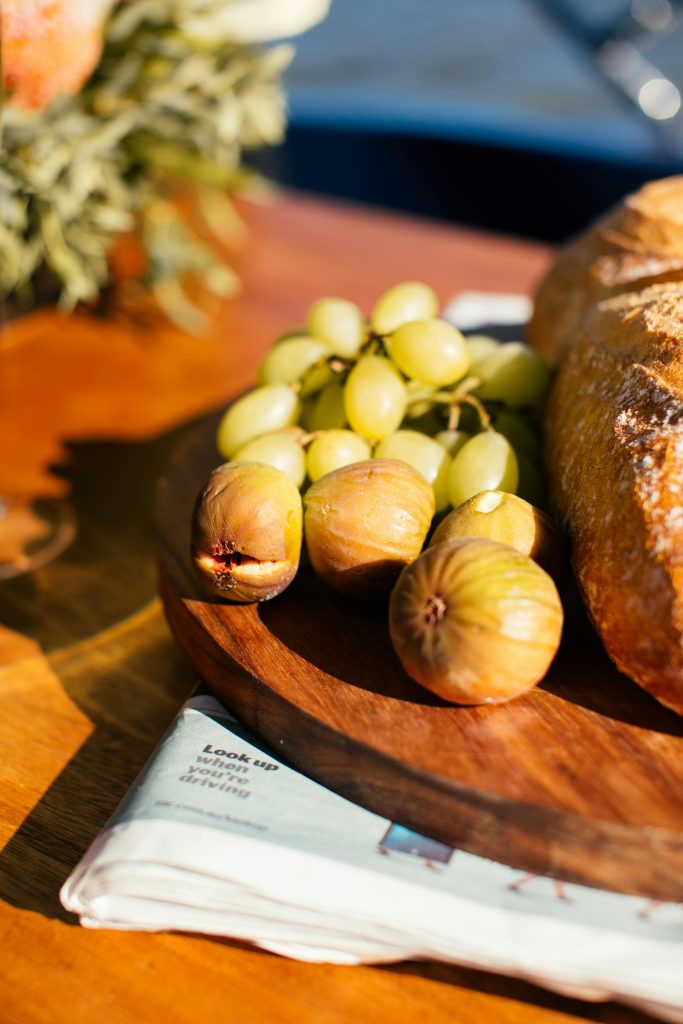Delving into the dynamic world of culinary preparations, the once time-consuming tasks of chopping, shredding, and pureeing have been revolutionized by the mighty Food Processor. A kitchen’s productivity engine, this tool is not just an appliance but a gateway to gastronomic creativity, enabling both seasoned chefs and kitchen novices to elevate their cooking prowess. With the press of a button, the Food Processor transforms tedious manual efforts into an effortless whirl of precision, turning whole foods into perfectly prepped ingredients in a matter of seconds. It’s the silent sous-chef in modern-day kitchens, tackling the grunt work so cooks can focus on the artistry of flavor combinations and presentation.
Not merely a convenience, Food Processors have become a necessity for those who cherish efficiency and aspire to healthier eating habits. The speed and versatility by which these powerful machines operate make them an indomitable force in the quest for quick and nutritious meals; there is no recipe too intricate or ingredient too tough. Say goodbye to the daunting anticipation of meal prep and the reluctance to explore complex recipes. The Food Processor breaks down those barriers, turning the once laborious onion dices and carrot juliennes into a hassle-free experience, empowering home chefs to dish out restaurant-quality results with unparalleled ease. In a fast-paced world where time is of the essence, this kitchen maestro answers the call for culinary excellence without the compromise of convenience.
Hamilton Beach Electric Vegetable Chopper & Mini Food Processor, 3-Cup, 350 Watts, for Dicing, Mincing, and Puree, Black (72850)
Function
A food processor is a versatile kitchen appliance designed to facilitate repetitive tasks in the preparation of food. At its core, it uses interchangeable blades and disks to perform a variety of functions such as chopping, slicing, shredding, grinding, and pureeing ingredients. For example, a chef might use a food processor to quickly chop onions, which saves time and reduces the chance of tearing up from the fumes. Chefs and home cooks alike rely on this appliance to make doughs for bread, pizza, or even pie crusts by mixing and kneading, showcasing its ability to handle both soft and solid foodstuff. Additionally, many modern food processors are equipped with settings that allow for fine control over the speed and duration of processing, ensuring that delicate herbs can be gently chopped without being pulverized, whereas tougher ingredients like nuts can be ground down to a fine meal or even turned into nut butter, illustrating the machine’s versatility and efficiency.
Uses
The uses of a food processor go beyond mere chopping and slicing. It can be employed to create a vast array of culinary components and dishes. For emulsification, the device is indispensable in creating homemade mayonnaise or vinaigrettes, ensuring a perfect melding of oil and vinegar or lemon juice. In making hummus or other spreads, a food processor ensures a smooth, consistent texture that would be difficult to achieve manually. Additionally, it’s widely used for grating cheese, an essential step for dishes such as pizza or au gratin potatoes. In the realm of pastry, a food processor can be used to blitz ingredients for cookie or cracker dough, making quick work of what could otherwise be a labor-intensive process. Case studies in professional kitchens have shown that the application of a food processor can drastically cut down preparation times for complex dishes, leading to more efficient kitchen operations and a swifter turnaround for high-volume food service establishments.
Design
The design of food processors often emphasizes ergonomics and accessibility. Many models feature a large feeding tube, allowing whole or large pieces of food to be inserted without preliminary chopping. The bowl capacity is carefully considered to accommodate varying quantities of ingredients, suitable for individual or family-sized portions. The design also typically includes a safety lock to ensure the machine operates only when the lid is properly secured, preventing accidents. Attention is often paid to the interface, with some processors featuring touchpad controls for easy cleaning and sleek appearance, whereas others may have dials or buttons for a more tactile control. The aesthetic of food processors has evolved over time, with modern versions available in a variety of colors and finishes to match contemporary kitchen designs. For instance, a matte finish can resist fingerprints and smudges, keeping the appliance looking pristine even under heavy use.
Build Quality
Build quality is paramount in a food processor as it needs to withstand the rigors of frequent and varied use. High-end models are frequently constructed with durable materials such as stainless steel blades and heavy-duty plastic for the bowl and housing, ensuring longevity. The motor, being the heart of the appliance, is built to endure continuous operation without overheating or failing. Brands known for exceptional build quality often offer extended warranties, which speak to the confidence in their product’s durability. The robust construction also helps maintain stability during operation, preventing the machine from moving or vibrating excessively when processing hard foods like carrots or dough. User reviews often highlight build quality, noting how well the appliance holds up over years of use and the effectiveness of its components in remaining sharp and efficient.
Primary Features
Primary features of a food processor include multiple speed settings that accommodate a wide range of food textures. The pulse function, in particular, allows for controlled bursts of power to achieve the desired consistency without over-processing. A comprehensive set of attachments commonly accompanies the food processor, such as various sized S-blades for chopping, dough blades for kneading, and an assortment of discs for shredding and slicing to different thicknesses. Advanced models may also feature integrated weighing scales, feeding systems for continuous processing, and even dough-proving functions. Some food processors are now being designed with smart technology, allowing users to connect to apps for recipe suggestions and processor controls. An example of this is advancing in the field, where food processors with preset functions for specific recipes can automatically adjust the speed and processing time, taking the guesswork out of complex cooking tasks and ensuring consistently high-quality results.
Recommended Food processor
“`html
| Pros of a Food Processor | Cons of a Food Processor |
|---|---|
|
|
“`
Top 10 rated Food processor
Understanding Your Kitchen Needs
When in the market for a food processor, the first step is to assess your kitchen needs. Think about the types of meals you prepare most often and the tasks you find tedious or time-consuming. Do you need a processor primarily for chopping and slicing, or are you looking for something that can handle more complex tasks like kneading dough or grinding meat? The frequency of use and the volume of food you typically prepare will also help determine the size and power of the food processor you require.
Motor Power
The motor is the heart of any food processor, and its power is a critical factor to consider. Motor power is usually measured in watts. Higher wattage typically means more power and the ability to handle tougher tasks without overheating or bogging down. For most home cooks, a food processor with a motor power between 600 to 1000 watts will suffice. However, if you’re planning to use your food processor for particularly heavy jobs, like making nut butter or kneading stiff dough, look for models with even more power.
Capacity and Size
Food processors come in various sizes, typically measured in cups. A smaller model might have a capacity of around 3 cups, while larger ones can hold up to 14 cups or more. Consider how much counter space you have, as well as storage space when not in use. If you regularly cook for a family or large groups, a larger capacity will save you time, as you won’t have to process ingredients in multiple batches. For smaller tasks or smaller households, a compact model may be more appropriate and easier to handle.
Attachments and Accessories
Attachments can significantly expand the versatility of a food processor. Look for models that include attachments you will actually use, such as various blades and disks for shredding, slicing, grating, and chopping. Some food processors also come with dough blades, egg whips, or juicer attachments. However, more attachments can also mean more clutter and more parts to clean, so balance variety with practicality.
Feeding Tube and Plunger
The feeding tube and plunger of a food processor determine how easily you can add ingredients. A wider feeding tube allows for adding larger items like whole potatoes or cucumbers without pre-cutting, saving you time. Ensure the plunger fits snugly to help push ingredients through efficiently and safely.
Quality of Materials
Build quality is important for longevity and performance. Food processors with a sturdy base tend to be more stable and less likely to move around on the counter while in use. The materials used for the bowls and blades are also critical. Look for shatterproof plastic bowls and high-quality stainless steel blades that will maintain their sharpness over time.
Easy to Clean
Consider how easy the food processor is to clean. Are the removable parts dishwasher safe or do they require hand washing? Intricate nooks and crannies can make cleaning tedious and discourage use, so look for a model with dishwasher-friendly, smooth surfaces.
Control and Speed Settings
Think about the control and speed settings available. Some food processors feature touchpad controls for easy cleaning and precise control, while others have dials or buttons. Variable speed controls can be very useful for achieving the right texture, and a pulse option allows for short bursts of power for more precise chopping and mixing.
Noise Level
Food processors can be noisy appliances, but some models are designed to operate more quietly than others. If noise level is a concern for you, look for reviews that comment on the noise output and consider choosing a model known for quieter operation.
Warranty and Customer Support
Finally, check the warranty and customer support options. A food processor is an investment, and having a good warranty can give you peace of mind. Look for a model with at least a one-year warranty, paying attention to what is covered. Also, consider the manufacturer’s reputation for customer support in case you need replacement parts or encounter any issues.
Best choice for Food processor in 2024
Hamilton Beach Electric Vegetable Chopper & Mini Food Processor, 3-Cup, 350 Watts, for Dicing, Mincing, and Puree, Black (72850)
Ninja BN601 Professional Plus Food Processor, 1000 Peak Watts, 4 Functions for Chopping, Slicing, Purees & Dough with 9-Cup Processor Bowl, 3 Blades, Food Chute & Pusher, Silver
Hamilton Beach Food Processor & Vegetable Chopper for Slicing, Shredding, Mincing, and Puree, 10 Cups + Easy Clean Bowl Scraper, Black and Stainless Steel (70730)
“`html
Identify Your Needs
Before you start your search, consider what you will be using the food processor for. Size matters; a smaller processor is sufficient for occasional use or smaller tasks like chopping herbs, whereas a larger one is better for frequent use or processing larger quantities. Also, think about the types of tasks (e.g., slicing, shredding, kneading) you want it to perform.
Research Brands and Models
Look for reputable brands with good customer reviews. You can read through customer feedback on Amazon to gauge the reliability and performance of a model. Consider the warranty and customer service reputation of the manufacturer as well.
Check for Key Features
Determine which features are important to you. Look for a model with different speed settings, a pulse function, and various blade attachments. A model with a wide feed chute can save you prep time. Additionally, ensure the food processor has safety features, such as a lock for the bowl and blades to prevent accidents.
Consider the Price
Set your budget before you start shopping. Prices can range significantly, so decide on what you are willing to spend. Keep in mind that a higher-priced food processor might come with more features or be more durable. However, there are also affordable options with good functionality.
Read About the Capacity
Check the capacity of the food processor’s bowl, usually measured in cups. Make sure it aligns with the amount of food you plan to process at one time. If you have a large family or entertain often, a larger capacity (11-14 cups) might be necessary.
Look for Easy Maintenance
Select a food processor with removable parts that are easy to clean. Many modern food processors feature parts that are dishwasher safe. Also, consider the ease of assembling and disassembling the processor for use and cleaning.
Assess Design and Storage
Consider the design and footprint of the food processor, especially if you have limited counter or storage space. Some models might come with a storage case for their attachments which can be a convenient feature.
Common Issues with Food Processors
Occasionally, users might face issues such as overheating or motor failure, especially with heavy usage. To avoid such problems, select a processor with a strong motor and good ventilation. Another common concern is the durability of the plastic components; make sure to choose a model made with high-quality materials. Moreover, a common annoyance might be the noise level; look for models that advertise quiet operation if this is important to you.
“`
Cheapest alternatives for Food processor
“`html
FAQs for Food Processor Product Review
What is the maximum capacity of this food processor?
The maximum capacity will vary depending on the model of the food processor. Typically, food processors range from small 3-cup choppers to larger 14-cup models. Please check the manufacturer’s specifications for the exact capacity of the model in question.
Can this food processor handle dough making?
Many food processors are capable of kneading dough, but this can depend on the specific features and power of the appliance. If the food processor includes a dough blade and has a powerful motor, it should be suitable for making dough.
How noisy is the food processor during operation?
The noise level of a food processor can vary, but most models will generate some noise while in use. The noise level typically correlates with the power of the motor; more powerful motors may produce more noise.
Is the food processor easy to clean?
This depends on the design of the food processor. Many models feature dishwasher-safe parts for easy cleaning, while others may require hand washing. Check the manufacturer’s instructions regarding cleaning procedures.
Are there multiple speed settings available?
Most food processors come with multiple speed settings to handle a variety of tasks. Some models also include a pulse function to give more control over the processing.
How durable is the food processor?
Durability varies by brand and model. It is often determined by the quality of materials used and the overall construction. Look for models with strong, sturdy bowls and blades, and a solid base to withstand prolonged use.
Is there a warranty included with the food processor?
Warranties are standard with most kitchen appliances. The length and coverage of a warranty for a food processor will differ by manufacturer, so it is important to read the warranty information carefully before purchasing.
What types of blades and attachments are included?
Food processors typically come with a variety of blades and attachments such as a chopping/mixing blade, slicing and grating disks, and sometimes a dough blade. Specific attachments may vary by model.
Can this food processor crush ice or make smoothies?
Some food processors are powerful enough to crush ice and can be used to make smoothies, but not all are designed for this task. If this is an important feature for you, check if it’s mentioned in the product’s description or reviews.
How much countertop space does the food processor require?
The size of the food processor will impact the amount of countertop space needed. Always check the dimensions of the unit to ensure it fits comfortably in your kitchen space.
“`
In summing up our comprehensive review of this exceptional food processor, it’s abundantly clear that it stands out as a valuable addition to any kitchen. Combining versatility with efficiency, this kitchen warrior is designed to meet all your chopping, dicing, and pureeing needs, saving you time and effort without compromising on the quality of your dishes.
The robust motor, pulse functionality, and varied blade options ensure that whether you’re kneading dough for a homemade pizza or slicing vegetables for a stir-fry, you can do it all with ease and precision. The machine’s intuitive operation simplifies even the most complex culinary tasks, making it accessible for amateur chefs and experienced cooks alike.
With its generous capacity and durable design, this food processor is not just an appliance, but a long-term investment in enhancing your cooking experience. Its easy-to-clean parts also mean that you can spend less time on cleanup and more time enjoying the delicious meals you create.
Whether you’re whipping up a quick weeknight dinner or prepping for a large family gathering, the versatility and efficiency of this food processor will make every step of food preparation a breeze. It’s not just a tool; it’s your reliable kitchen companion, ready to tackle any recipe you throw its way. Make the wise choice — elevate your culinary creations with this top-performing food processor.







